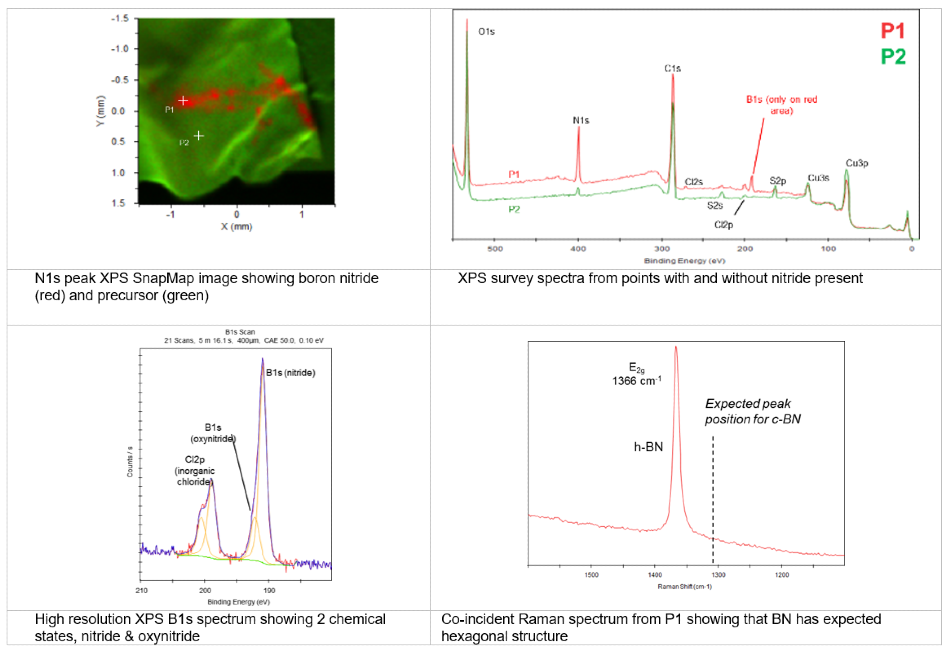
Dr. Tim Nunney, Product Marketing Manager at Thermo Fisher Scientific, Surface Analysis, talks about a buzzing combination of X-ray photoelectron spectroscopy (XPS) and Raman, how the two complement each other, and make a real difference for your sample`s research.
Talking about XPS surface analysis and how it supports scientists in solving a wide variety of surface engineering problems is something that I am very passionate about. But well…let`s be honest, no matter how great a technique X-ray photoelectron spectroscopy is, it is not always able to get you all the answers. More often than not, a successful analysis relies on finding the right combination of techniques to get the information that is required to completely understand a material. In this article, I want to elaborate on one of the most recent combinations of surface analysis: XPS surface analysis and Raman.
Working closely with colleagues in the Raman product sector, we noticed that there were a few application areas where we had overlaps. So, we focused on what each technique delivered, and how they complemented each other. Successful workshops and conference presentations convinced us that it would be brilliant to be able to get the data from precisely the same point on the sample using one single instrument. Now we can integrate a Raman spectrometer onto an XPS instrument!
While XPS provides surface elemental and chemical state composition of the top 10 nm (or thereabouts) or the surface of a material, Raman spectroscopy provides molecular identification, including, in some cases, structural confirmation of a material. Great – lots of potential information there, but why might you need to use both techniques together?
Let’s consider two-dimensional materials, materials such as graphene, boron nitride, and molybdenum disulphide. These are materials that have lots of potential applications, from electronics and sensors to the lightweight strengthening of composites. These are materials that are only 1 atomic layer thick, perfect for XPS analysis but are also produce a strong Raman signal. XPS will allow the chemistry of the material to be determined, identifying contaminants, or quantifying dopants (an extreme example here). Raman gives confirmation of the structure and can identify the density of defects present. If you are producing films for an application, for example, a touchscreen, then understanding that the production process is critical. You want to make material that is free of defects, and uncontaminated to ensuring that the resulting device works correctly. This confirmation can only be obtained by using both XPS and Raman together, and being on a single instrument means that the analysis is easily correlated.

Another area where using the two techniques in combination is simply vital - Lithium-ion battery materials. XPS can reveal the surface oxidation states and shed light on the compounds that form at the surface of the electrode which can degrade battery performance. Raman can probe deeper than XPS, and can reveal whether bulk changes are occurring, which may indicate that the structure may be failing following cycling. Being able to show how the surface oxidation states are changing, and how the underlying molecular structure may be altering can be of real help to scientists developing new battery technologies to increase the adoption in vehicles and other applications.
This is just a starting point. The combination of XPS and Raman can deliver significantly richer information than using the techniques in isolation. Other application areas include polymer engineering, pharmaceutical applications, and nanomaterials, and we’re finding new areas to explore all the time. So, while a lot of work can be done with individual techniques, sometimes you simply have to team-up techniques to see the complete picture!
Do you agree? What combinations of techniques fit your applications? Leave a comment below!
Read More
Acknowledgments
I’d like to thank my colleague, Ksenia Tantsurina for her help in creating and editing this article.

This information has been sourced, reviewed and adapted from materials provided by Thermo Fisher Scientific – X-Ray Photoelectron Spectroscopy (XPS).
For more information on this source, please visit Thermo Fisher Scientific – X-Ray Photoelectron Spectroscopy (XPS).
Disclaimer: The views expressed here are those of the interviewee and do not necessarily represent the views of AZoM.com Limited (T/A) AZoNetwork, the owner and operator of this website. This disclaimer forms part of the Terms and Conditions of use of this website.